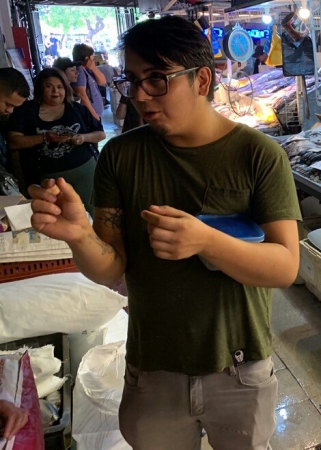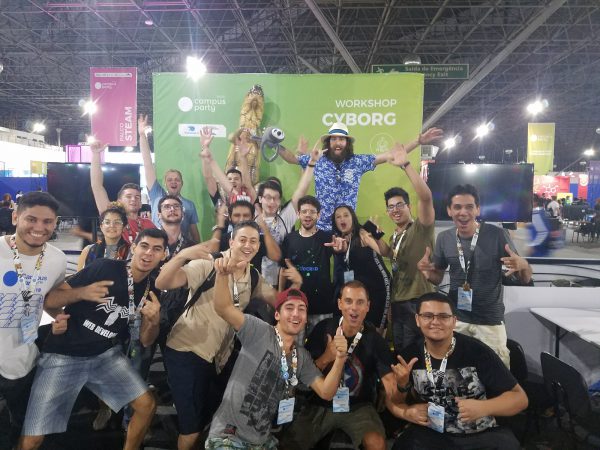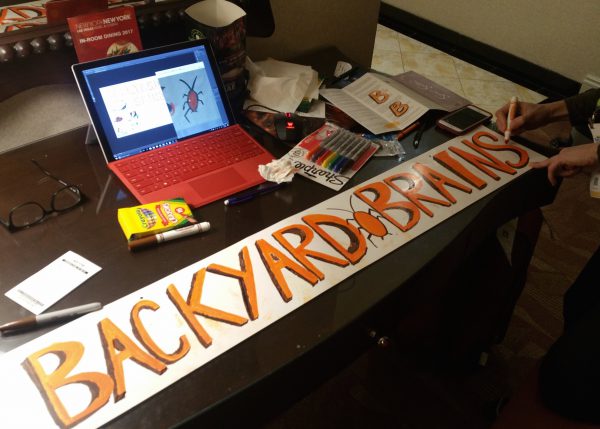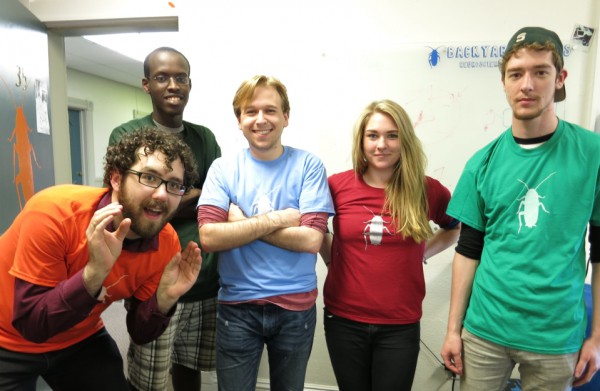-
 EducationBackyard Brains is now in its second year of interns from the University of Santiago de Chile (affectionately called Usach). Last year we had a project recording the ganglia of snails – and this we will continue our voyage in the world of invertebrates with an old favorite and a new favorite. Cockroaches and Clams. The […]
EducationBackyard Brains is now in its second year of interns from the University of Santiago de Chile (affectionately called Usach). Last year we had a project recording the ganglia of snails – and this we will continue our voyage in the world of invertebrates with an old favorite and a new favorite. Cockroaches and Clams. The […] -
 EducationBefore I spill the Feijoada about Backyard Brains’ awesome experience at Campus Party Brazil, I should mention that I firmly believe that education can save the world. I should also mention that in regards to our brains, according to neuroscience research, your education lasts your entire life. I’ll cut to the chase: my recent Brazilian […]
EducationBefore I spill the Feijoada about Backyard Brains’ awesome experience at Campus Party Brazil, I should mention that I firmly believe that education can save the world. I should also mention that in regards to our brains, according to neuroscience research, your education lasts your entire life. I’ll cut to the chase: my recent Brazilian […] -
 BizThe Consumer Electronics Show floods Las Vegas annually with nearly 200,000 visitors and exhibitors, and for the first time, Backyard Brains joined the likes of Intel, Google, IBM, and other giants by attending as exhibitors and hosting our own booth! The trip was fun, but certainly wasn’t without its challenges. Upon arriving in Vegas, our team […]
BizThe Consumer Electronics Show floods Las Vegas annually with nearly 200,000 visitors and exhibitors, and for the first time, Backyard Brains joined the likes of Intel, Google, IBM, and other giants by attending as exhibitors and hosting our own booth! The trip was fun, but certainly wasn’t without its challenges. Upon arriving in Vegas, our team […] -
 EducationHello, my name is Olivier and I am a junior in neuroscience at Michigan State University, but for the rest of the summer Ann Arbor is my home as I work on a research project as a Backyard Brains intern! My goal is to improve upon the roboroach by adding further directional control. Left and […]
EducationHello, my name is Olivier and I am a junior in neuroscience at Michigan State University, but for the rest of the summer Ann Arbor is my home as I work on a research project as a Backyard Brains intern! My goal is to improve upon the roboroach by adding further directional control. Left and […] -
 EducationSummer is finally shining rays of sunlight on our lovely hometown of Ann Arbor, Michigan, and with it Backyard Brains is welcoming its newest bright minds from Michigan State University’s Undergraduate Neuroscience department. Marta, Olivier, Alex, Cort, and Dylan met in the BYB office at the early hour of 10am (well, early for a college […]
EducationSummer is finally shining rays of sunlight on our lovely hometown of Ann Arbor, Michigan, and with it Backyard Brains is welcoming its newest bright minds from Michigan State University’s Undergraduate Neuroscience department. Marta, Olivier, Alex, Cort, and Dylan met in the BYB office at the early hour of 10am (well, early for a college […]